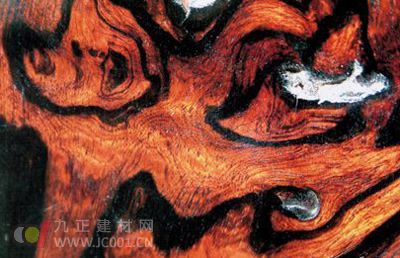Hainan huanghuali, a Chinese wood net, is called “after the woodâ€. It is not only a delicate texture, but also a glossy, unique and beautiful “Ghost Face†has become a favorite reason. Grimace is the formation of trees that are invaded by bacteria during their growth. In fact, many plants have so-called ghost faces, and the ghost face of the unique yellow pear is particularly attractive, and is poetry by the Ming literati, calling it "a cute face." Grimace has become a symbol for identifying Hainan huanghuali. So how is the cute face of Hainan Huanghua Pear formed? According to experts from the Redwoods, the formation of Hainan Huanghuali Grimace has a great relationship with the local environment. This is also the reason why the trees in other places have ghost faces but there is no such thing as the beautiful face of Hainan Huanghua Pear. The unique geographical environment is in other The place cannot be copied. According to experts, Hainan huanghuali grows in the sea, and there are often sea breeze on the beach, so Hainan huanghuali is often broken. Every year from August to October in Hainan Island, most of the typhoon is intensive, the wind direction is changeable and rapid, and the huanghuali tree does not have the ability to compete with it at the young age. In addition, the rainy season is a good season for the rapid growth of huanghuali wood. Therefore, the trunk of huanghuali wood grown in a stormy environment often twists and deforms, which leads to low branching or multi-crossing. The mainstay of the rosewood tree tends to bend downwards with typhoons and heavy rains, sometimes even to the ground. If the bud becomes a second trunk from the bend, then the former trunk becomes a branch and often forms a natural fork. At this time, sunlight, water and nutrients tend to concentrate on the trunk. The same process will be repeated several times for each storm. This phenomenon will last for about 10 years until the trunk has the ability to withstand the turmoil of the typhoon. In general, when the diameter of the trunk is about 10cm, it will no longer be broken, so that there is no longer a fork. Therefore, the trunk of a huanghuali tree is often not necessarily the backbone of the young stage. The trunk and the side branches alternately grow and serve as the main servants. This phenomenon naturally has a significant effect on the texture of the huanghuali wood, such as twill, twisted, grimace or serpentine ripples. For example, in the Changjiang area of ​​Hainan Island, the huanghuali wood grown in the jungle or in the sheltered area tends to be straight and straight, and the pattern is less and less changeable, while in the sparse forest or in the sloping field, the pattern changes greatly. It is colorful and fascinating. The formation of the huanghuali grimace was so complicated. The unique geographical growth environment made Hainan huanghuali experience the ups and downs from the seedling stage. It was a disaster, but it was poetry by the literati. It has a unique charm, which has a great relationship with the aesthetics of the Ming Dynasty. The ancient literati divides the beauty into four levels. From low to high, it is gaudy, subtle, emotional, and morbid. The beauty of the level, just like the face of Hainan Huanghua Pear, was originally an abnormal morbidity, but it became the object of literary scholars vying for it. It is still passed down to this day. DANYANG TRUST IMPORT & EXPORT COMPANY LIMITED , https://www.dytrust-tools.com